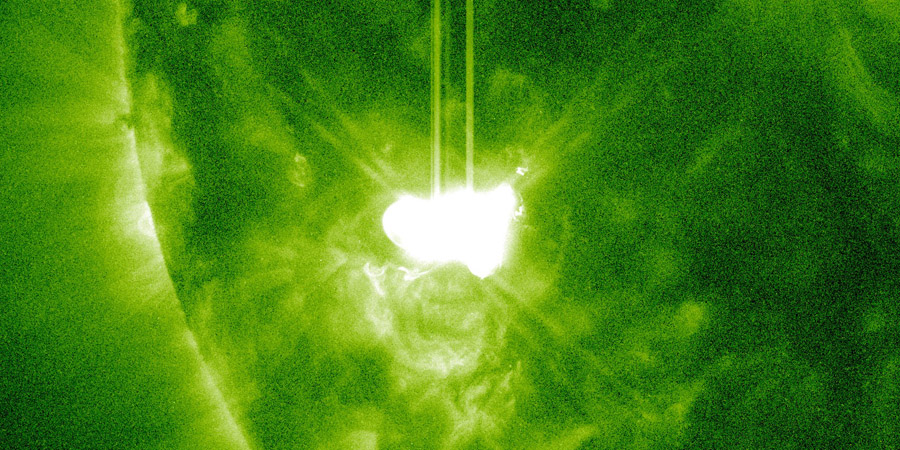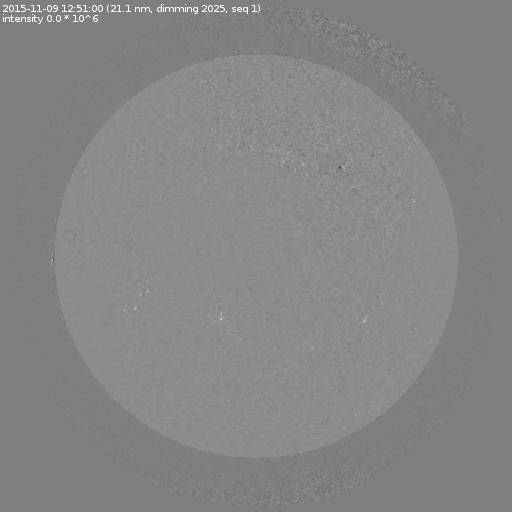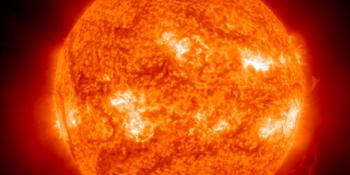M3.9 solar flare, South pointing IMF
Monday, 9 November 2015 13:36 UTC

Sunspot region 2449, which is actually not a very complex sunspot region, was the source of a long duration M3.9 (R1-minor) solar flare that peaked today at 13:12 UTC.
Strong M3.95 solar #flare from #sunspot region 12449 - Follow live on https://t.co/XHATH0OOfT pic.twitter.com/9e5llbbEjT
— SpaceWeatherLive (@_SpaceWeather_) 9 november 2015
Sunspot region 2449 is not directly facing Earth but if this event launches a coronal mass ejection, which seems likely right now, an earth-directed component shouldn't be excluded. SDO shows us coronal dimming and a massive coronal EUV wave which are excellent signs that a coronal mass ejection was launched. We keep you updated once SOHO coronagraph imagery becomes available.

Animation: SDO difference animation showing the coronal EUV wave. Source: SIDC.
ALERT: Type IV Radio Emission Begin Time: 2015 Nov 09 1305 UTC
ALERT: Type II Radio Emission Begin Time: 2015 Nov 09 1305 UTC Estimated Velocity: 957 km/s
SUMMARY: 10cm Radio Burst Begin Time: 2015 Nov 09 1300 UTC Maximum Time: 2015 Nov 09 1306 UTC End Time: 2015 Nov 09 1311 UTC Duration: 11 minutes Peak Flux: 670 sfu Latest Penticton Noon Flux: 108 sfu
South pointing IMF
The direction of the IMF (Bz) is currently pointing southward near -5nT and has been doing so steadily for the past 18 hours or so. Active geomagnetic conditions are being observed and this could persist if the direction of the IMF continues point southward. This all likely has to do with coronal hole solar wind stream effects which could intensify in the coming 24 hours. A minor G1 geomagnetic storm watch remains in effect.

Image: Aurora Borealis as seen this night in northern Sweden by Marcel de Bont.
Thank you for reading this article! Did you have any trouble with the technical terms used in this article? Our help section is the place to be where you can find in-depth articles, a FAQ and a list with common abbreviations. Still puzzled? Just post on our forum where we will help you the best we can!
Latest news
Latest forum messages
Support SpaceWeatherLive.com!
A lot of people come to SpaceWeatherLive to follow the Sun's activity or if there is aurora to be seen, but with more traffic comes higher server costs. Consider a donation if you enjoy SpaceWeatherLive so we can keep the website online!

Space weather facts
| Last X-flare | 2025/01/04 | X1.85 |
| Last M-flare | 2025/01/09 | M1.1 |
| Last geomagnetic storm | 2025/01/04 | Kp5 (G1) |
| Spotless days | |
|---|---|
| Last spotless day | 2022/06/08 |
| Monthly mean Sunspot Number | |
|---|---|
| December 2024 | 154.5 +2 |
| January 2025 | 140.8 -13.8 |
| Last 30 days | 151.7 +34.3 |


